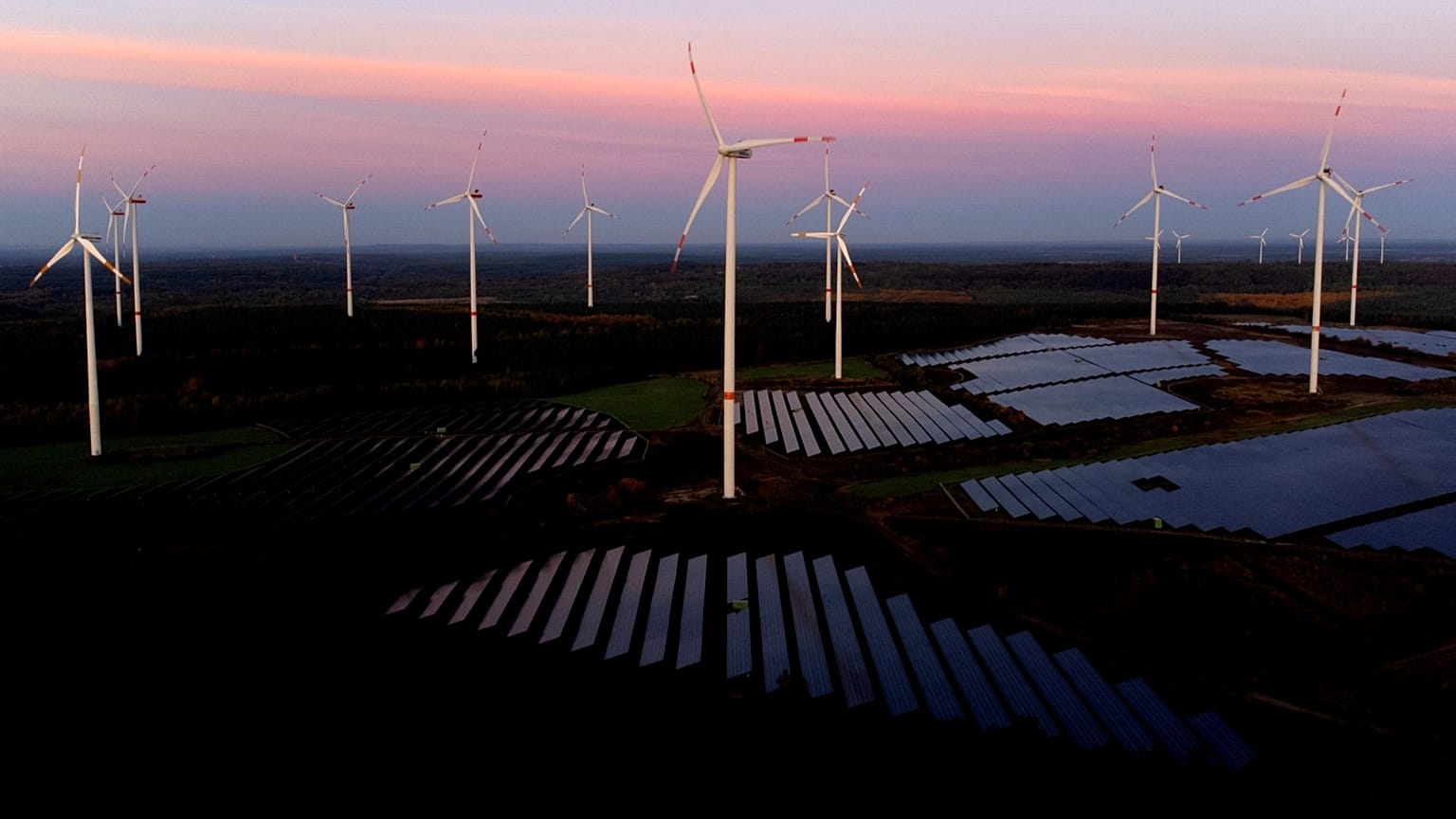Record-breaking progress on renewable energy alone will not prevent global warming from exceeding 1.5℃, a new report warns.
Europe must strive for bolder renewable energy targets to protect the climate, despite making world-record progress.
This year, worldwide solar and wind power generation outpaced electricity demand, while renewable energies combined generated more power than coal for the first time on record.
According to thinktank Ember, global solar generation grew by 31 per cent in the first half of 2025, with wind generation also up by 7.7 per cent. At the same time, total fossil fuel generation slumped slightly, by less than one per cent.
However, a new report by the International Renewable Energy Agency (IRENA), the COP30 Brazilian Presidency and the Global Renewables Alliance (GRA) has warned the world is still falling behind on its renewable energyand efficiency goals. The groups are now calling for all nations – including the EU – to “move faster”.
‘We must step up’
Unveiled during a pre-COP30 event, the report found that global renewable capacity additions reached 582 GW last year, marking a 15.1 per cent annual growth rate compared to 2023's 14.4 per cent growth rate.
While this trend is positive, to stay on track for the COP28 UAE Consensus target of triplingrenewables to 11.2 TW by 2030, a staggering 1,122 GW of renewable capacity must be added every year from 2025 onward.
If the capacity growth seen in 2024 continues at the same rate through the rest of the decade, only 10.3 TW of renewable power capacity would be installed by 2030.
United Nations Secretary-General António Guterres hailed the clean energy revolution as “unstoppable” but argued the world must “step up, scale up and speed up” the energy transition.
“Renewables are deployed faster and cheaper than fossil fuels, driving growth, jobs, and affordable power,” he adds. “But the window to keep the 1.5℃ limit within reach is rapidly closing.”
Renewable energy: Where does the EU stand?
The EU added 72.3 GW of new renewable power capacity in 2024, bringing the total installed to 702.6 GW.
While this marks an increase of just over 11 per cent compared to 2023, renewable capacity must reach 1,247 GW by 2030 under the 1.5℃ scenario.
“This would raise the share of renewables in total installed capacity to 79 per cent, up from around 60 per cent in 2024,” the report says.
Experts say the boost would be driven by solar - the world’s cheapest power source - and wind, which together are expected to contribute 57 per cent of total generation by 2030.
Data from Eurostat recently found that June 2025 was the first month in history where solar was the main source of electricity generated in the EU, accounting for 22 per cent of the energy mix.
‘We must step up’
The report’s findings call for renewable energy targets to be integrated into national climate plans ahead of COP30, as well as greater investments in grid and supply chains.
Francesco La Camera, Director-General of IRENA, the International Renewable Energy Agency, welcomed the recent boost, but warned that records alone will not keep the commitment to the Paris Agreement alive.
“Renewables are not just the most cost-effective climate solution, they are the biggest economic opportunity of our time,” he adds.
“By raising targets, mobilising finance and deepening cooperation, major economies can lead the energy transition and make COP30 a milestone.”



















